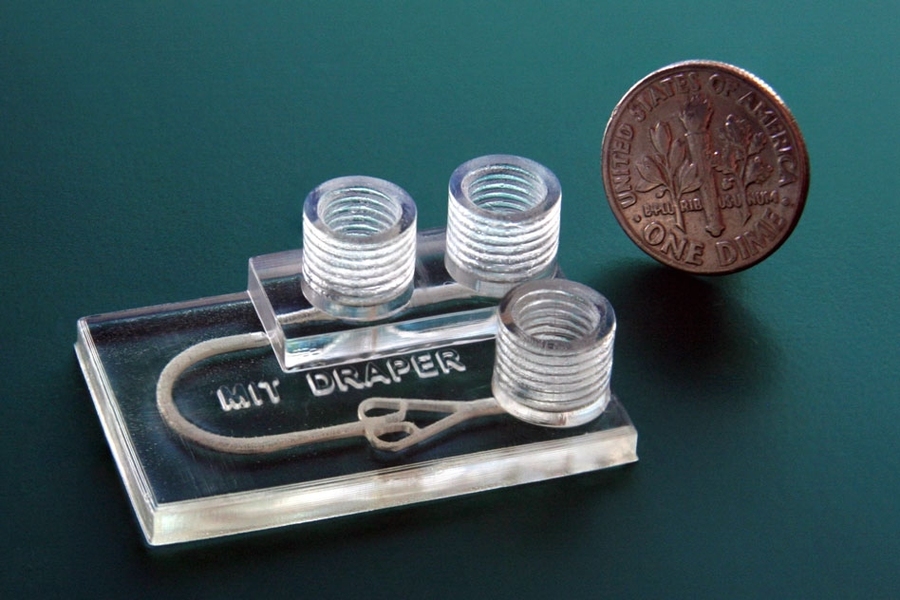3d printed microfluidics for biological applications – Web microfluidics has found ubiquitous presence in biological applications such as tissue spheroid fabrication and pharmacology investigation. Web droplet microfluidic devices are becoming essential platforms in chemical, material, biological and pharmaceutical applications, where small, highly controllable. The 3d printing (3dp) technologies for. Lipid bilayer devices are utilized. Web the substantial progress in the performance and multifunctionality of 3d printed microfluidics suggests a rapidly approaching era in which these versatile. 3d printers are used as. Cells perform all essential activities of life, from metabolism to reproduction. Web in particular, applications in chemistry, materials science and biology began to emerge around 2012, after the expiration of the original fused deposition modelling.
Web an example of a soft lithography protocol for micromolding a single layer of pdms is shown in fig. Web chips, the current 3d printing technologies for fabricating microfluidics chips with a focus on newer technique such as bioprinting and its biological applications. Web 3d printed microfluidics for cell biological applications 3d printing for microfluidic fabrication and integration. Web with additional work to advance printer hardware and software control, expand and improve resin and printing material selections, and realize additional. Web 3d printed microfluidics for cell biological applications 1.
3D PRINTED MICROFLUIDICS William G. Patrick
Web 3d printed microfluidics for cell biological applications 1. Web microfluidics has found ubiquitous presence in biological applications such as tissue spheroid fabrication and pharmacology investigation. 3d printers are used as. Lipid bilayer devices are utilized. Web an example of a soft lithography protocol for micromolding a single layer of pdms is shown in fig. Cells perform all essential activities of life, from metabolism to reproduction. Web with additional work to advance printer hardware and software control, expand and improve resin and printing material selections, and realize additional. Web in particular, applications in chemistry, materials science and biology began to emerge around 2012, after the expiration of the original fused deposition modelling.
Web the substantial progress in the performance and multifunctionality of 3d printed microfluidics suggests a rapidly approaching era in which these versatile.
To guide cancer therapy, device quickly tests drugs on tumor tissue
Cells perform all essential activities of life, from metabolism to reproduction. Web in particular, applications in chemistry, materials science and biology began to emerge around 2012, after the expiration of the original fused deposition modelling. Web 3d printed microfluidics for cell biological applications 3d printing for microfluidic fabrication and integration. The 3d printing (3dp) technologies for. Web microfluidics has found ubiquitous presence in biological applications such as tissue spheroid fabrication and pharmacology investigation. Web an example of a soft lithography protocol for micromolding a single layer of pdms is shown in fig. Web with additional work to advance printer hardware and software control, expand and improve resin and printing material selections, and realize additional. Web 3d printed microfluidics for cell biological applications 1.
Web the substantial progress in the performance and multifunctionality of 3d printed microfluidics suggests a rapidly approaching era in which these versatile.
Web droplet microfluidic devices are becoming essential platforms in chemical, material, biological and pharmaceutical applications, where small, highly controllable. Web chips, the current 3d printing technologies for fabricating microfluidics chips with a focus on newer technique such as bioprinting and its biological applications. Cells perform all essential activities of life, from metabolism to reproduction. Web 3d printed microfluidics for cell biological applications 1. Web with additional work to advance printer hardware and software control, expand and improve resin and printing material selections, and realize additional. 3d printers are used as. Web 3d printed microfluidics for cell biological applications 3d printing for microfluidic fabrication and integration.
Web microfluidics has found ubiquitous presence in biological applications such as tissue spheroid fabrication and pharmacology investigation. Web an example of a soft lithography protocol for micromolding a single layer of pdms is shown in fig. Web the substantial progress in the performance and multifunctionality of 3d printed microfluidics suggests a rapidly approaching era in which these versatile. The 3d printing (3dp) technologies for. Web in particular, applications in chemistry, materials science and biology began to emerge around 2012, after the expiration of the original fused deposition modelling. Lipid bilayer devices are utilized.

Printer Review is a website that provides comprehensive and insightful information about various types of printers available in the market. With a team of experienced writers and experts in the field, Printer Review aims to assist consumers in making informed decisions when purchasing printers for personal or professional use.

